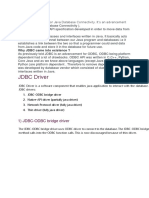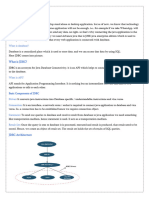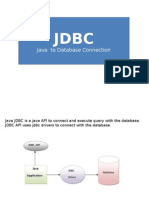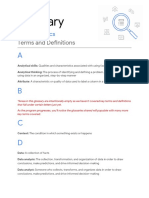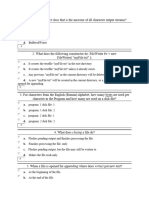0% found this document useful (0 votes)
12 views5 pagesUnit VI Database
Unit VI focuses on interacting with databases using Java, specifically through JDBC and ODBC. It covers the architecture of JDBC, including two-tier and three-tier models, as well as the types of JDBC drivers and key classes/interfaces involved in database programming. The document also provides example code for performing JDBC operations.
Uploaded by
shrutimanval104Copyright
© © All Rights Reserved
We take content rights seriously. If you suspect this is your content, claim it here.
Available Formats
Download as DOCX, PDF, TXT or read online on Scribd
0% found this document useful (0 votes)
12 views5 pagesUnit VI Database
Unit VI focuses on interacting with databases using Java, specifically through JDBC and ODBC. It covers the architecture of JDBC, including two-tier and three-tier models, as well as the types of JDBC drivers and key classes/interfaces involved in database programming. The document also provides example code for performing JDBC operations.
Uploaded by
shrutimanval104Copyright
© © All Rights Reserved
We take content rights seriously. If you suspect this is your content, claim it here.
Available Formats
Download as DOCX, PDF, TXT or read online on Scribd
/ 5








